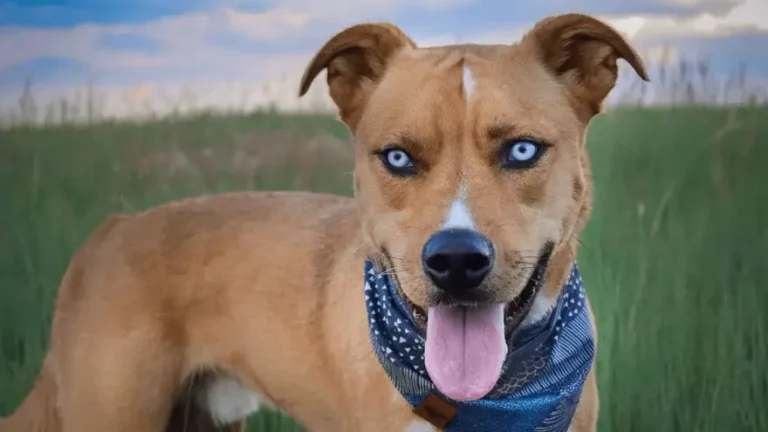Pitbull and Husky Mix: Pitsky Dog Breed
The Pitsky is an intriguing mix of an American Pit Bull Terrier and a Siberian Husky. This designer dog breed is known for its unique combination of features and behaviors that vary from one dog to another.
People love these dogs for their boundless energy and ability to form close family ties. However, owning a Pitsky is not simple. They require an in-depth understanding of their needs.
When considering getting a Pitsky, you must consider their care, the best ways to train them, and how to keep them happy in the long run. We must pay close attention to these aspects to ensure we’re doing right by these engaging animals.
Key Takeaways
- Pitskies blend Pit Bull and Husky traits.
- These dogs thrive in knowledgeable, active homes.
- Consider their training and long-term happiness.
Quick Facts
The Pitsky crossbreed between the American Pit Bull Terrier and the Siberian or Alaskan Husky. This mix results in a variety of looks and behaviors.
Pitskies come in various sizes, usually from medium to large, weighing between 30 and 80 pounds and standing 16 to 25 inches tall at the shoulder. They need lots of exercise because they have so much energy. If they get bored, they might start chewing or digging.
These dogs are very loyal and will protect their family. They’re usually significantly friendly when they’ve been well-socialized with kids and other pets, but their behavior can vary. This is because of the different genes they might inherit and how they’re raised.
Pitsky Dog Breed Pictures
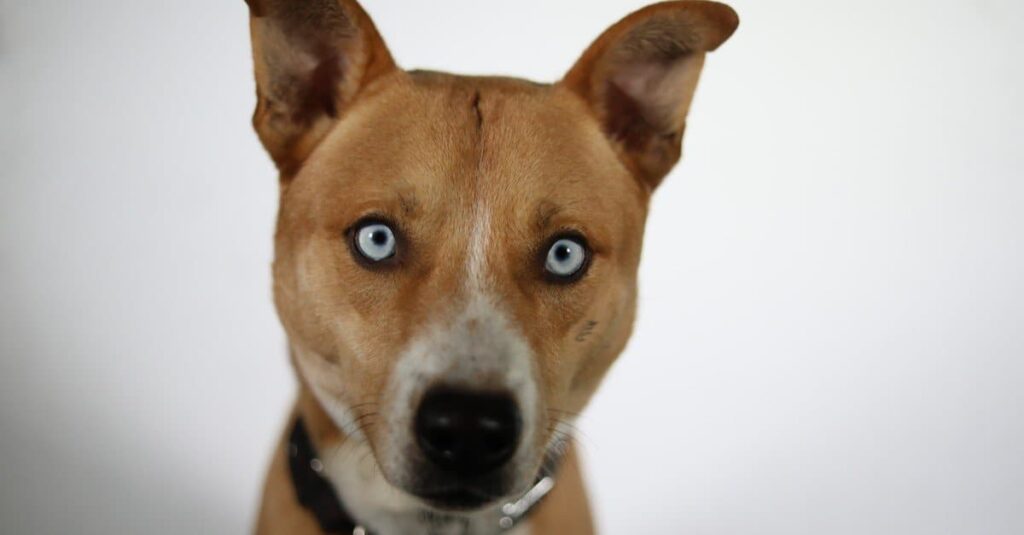
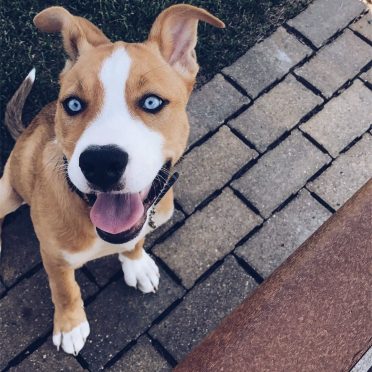
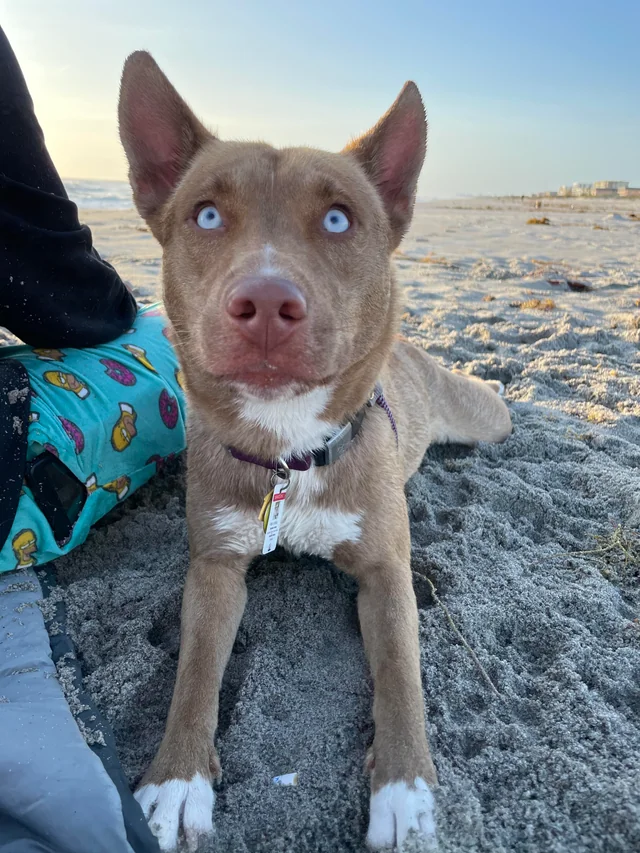
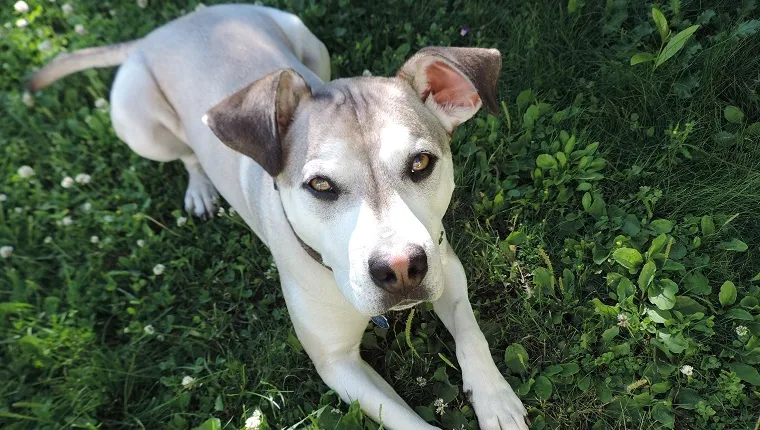
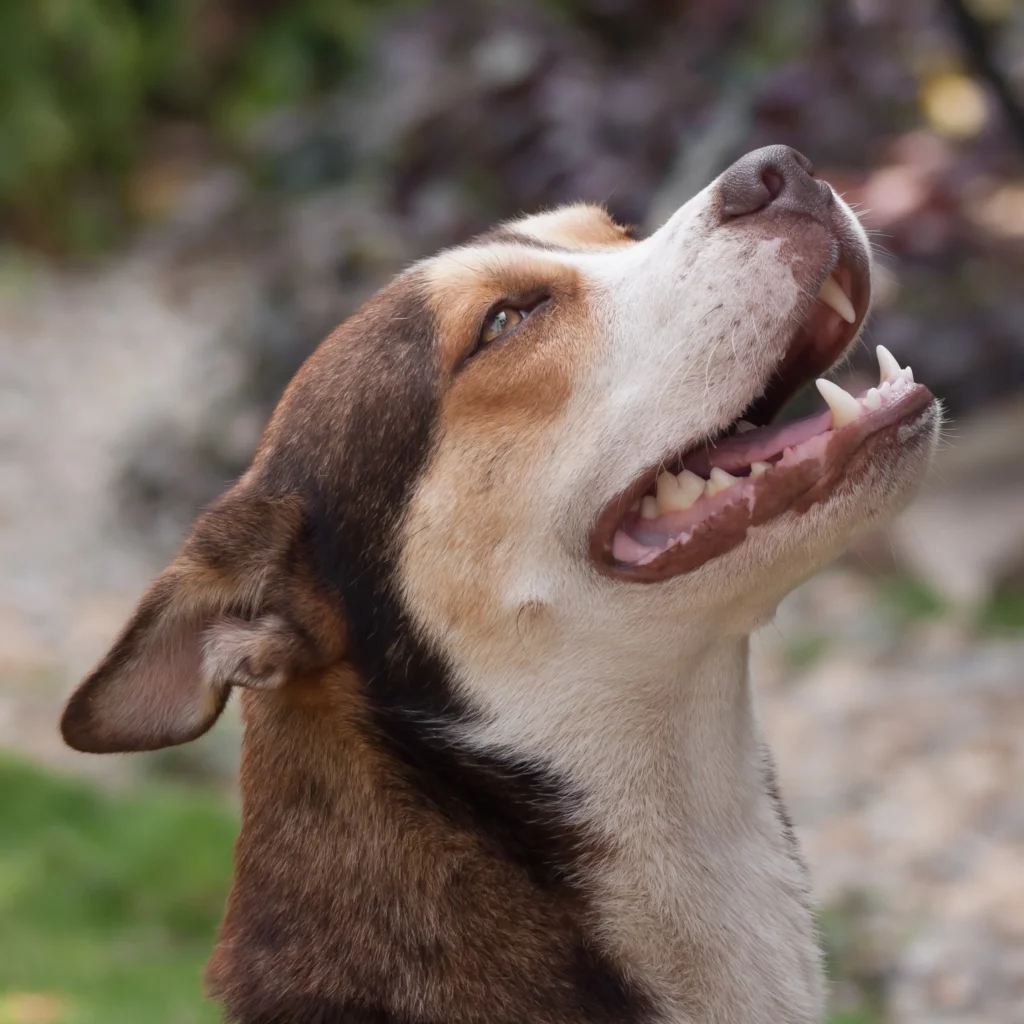
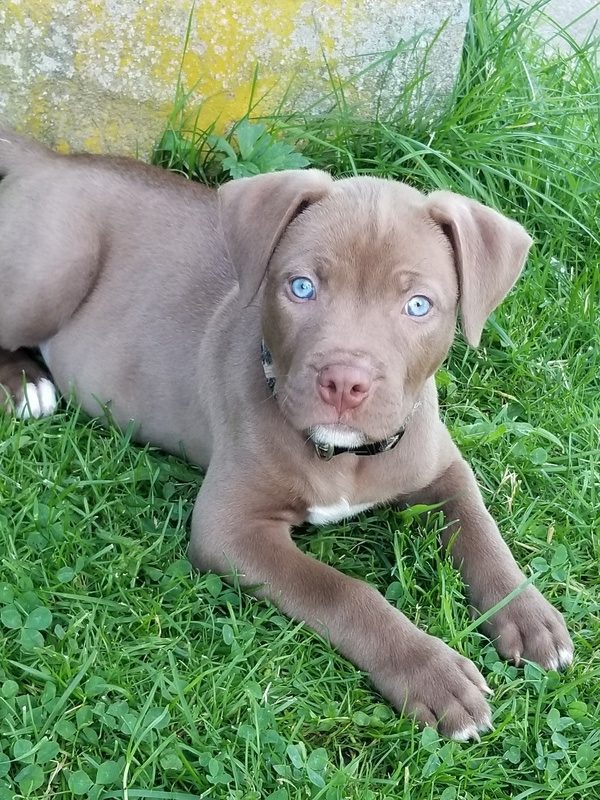
Overview
Bearing the distinctive traits of its parent breeds, the American Pit Bull Terrier and the Siberian Husky, the Pitsky emerges as a robust and energetic hybrid, well-suited for active family life.
Recognized as a designer dog, this Pitbull Husky Mix exhibits a blend of physical characteristics, from coat color to ocular pigmentation, reflecting its diverse genetic background.
As a cross between an American canine known for its strength and loyalty and a Siberian breed renowned for endurance and friendliness, the Pitsky demands early training and socialization to harness its potential for high sociability and intelligence.
Such upbringing mitigates potential inherited behavioral issues and capitalizes on the breed’s eagerness to please and capacity for complex learning.
Key Pitsky Traits
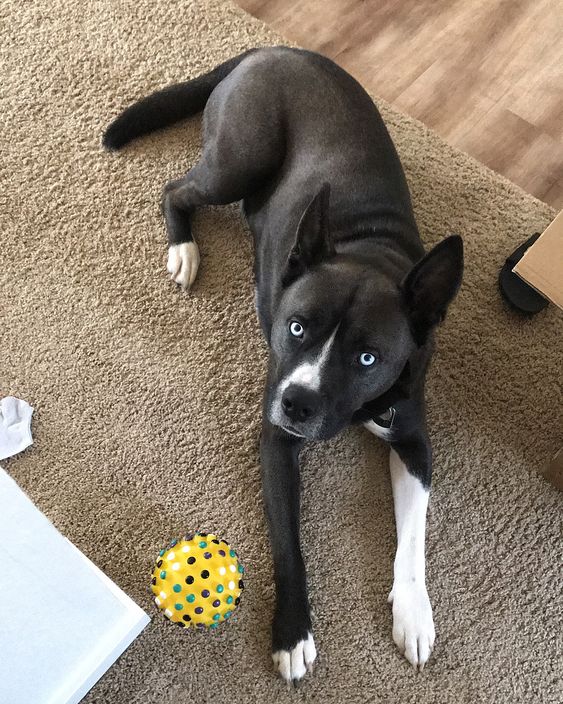
What distinguishes a Pitsky in the canine world are its unique traits, which arise from the muscular build and determination of the American Pit Bull Terrier with the Siberian Husky’s resilience and amicable disposition. This hybrid dog exhibits various characteristics inherited from its parent breeds. Their activity and energy levels demand rigorous exercise and engagement to maintain their physical and mental health. As a Pitsky dog owner, understanding and catering to their robust constitution and high-spirited nature is crucial.
| Trait | Description |
|---|---|
| Size | Medium to large, 30-80 lbs, 16-25 inches tall |
| Temperament | Active, loyal, protective |
| Health & Maintenance | Prone to certain hereditary conditions |
Regular veterinary care, consistent training, and socialization are imperative to manage the Pitsky’s potential and ensure its well-being.
Origins of the Pitsky Breed
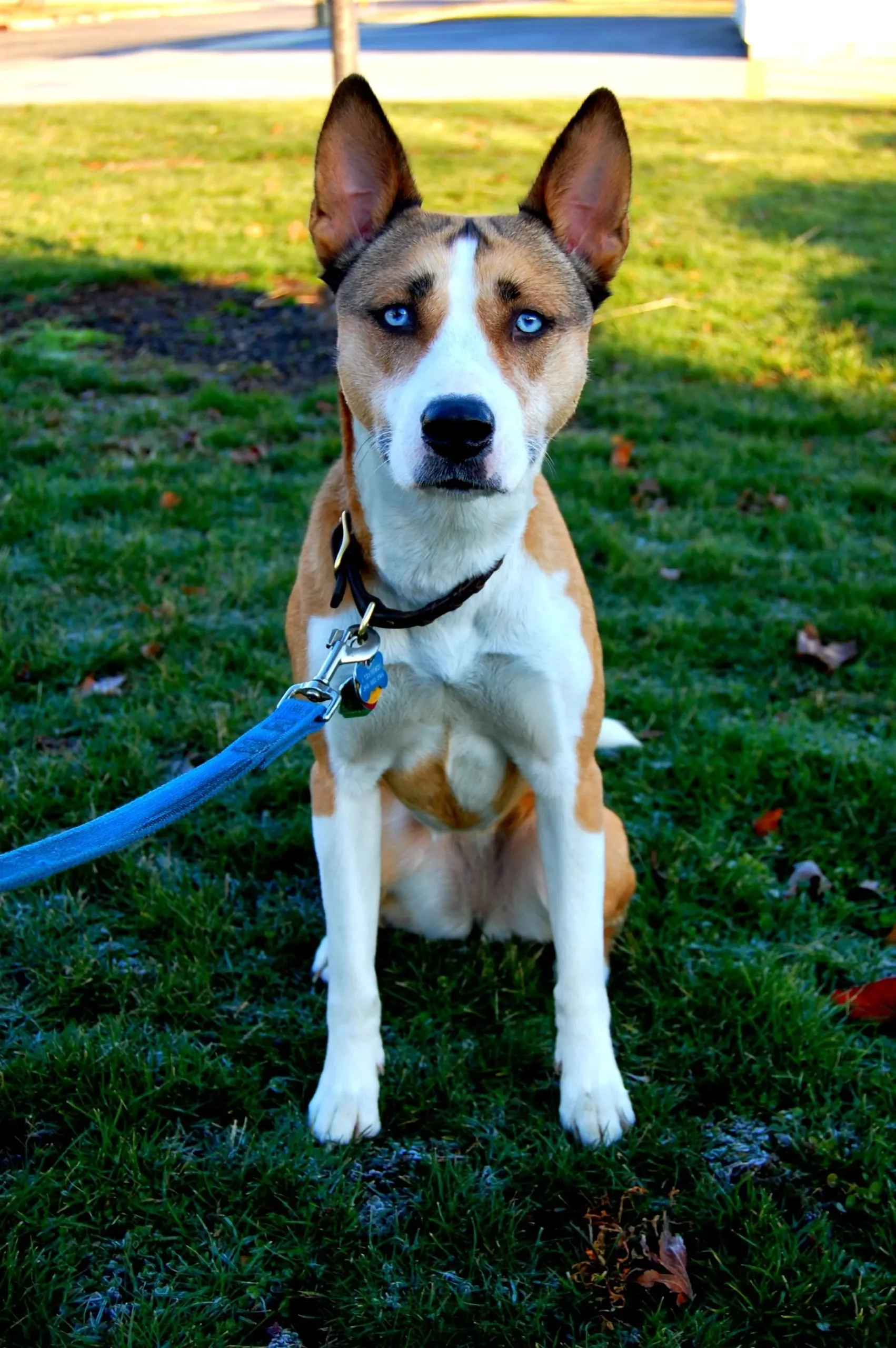
The Pitsky breed is a result of intentionally mating two pure dogs to get the best of both worlds. The aim was to mix the American Pit Bull Terrier’s strength and determination with the endurance and energy of the Siberian or Alaskan Husky. This effort was to create a dog that is both strong and energetic. The puppies from this mix have a variety of traits that are interesting and worth looking into.
- Origin of the Pitsky Breed
- The purpose of crossbreeding
- Early breeding goals and methods
- Genetic selection and considerations
- The Pitsky’s Ancestors
- Traits of the American Pit Bull Terrier
- Contributions from Siberian and Alaskan Huskies
- How traits are passed down and vary
- Milestones in Pitsky Development
- Recognition from dog registries
- Trends in breed popularity and demand
- Progress in health testing and responsible breeding practices
The Pitsky, a hybrid dog breed, came from intentional breeding. Breeders wanted to create a dog with the muscular physique and resilience of the Pit Bull Terrier and the Husky’s stamina and enthusiasm. These dogs were bred to be flexible companions, suitable for various tasks and environments. The combination of these two breeds has resulted in dogs with diverse appearances and behaviors that require careful study as they grow.
Recognizing the importance of responsible breeding, there has been a shift towards better health screenings. This helps ensure that Pitskies are healthy and well-tempered. Their popularity has fluctuated, but they remain a sought-after mix for their unique qualities and the companionship they offer.
Breed Hybrid Genesis
In the late 1990s, breeders mixed the American Pit Bull Terrier with the Siberian Husky to create the Pitsky. They wanted to make a mixed breed with fewer health problems and various sizes and coats. This new hybrid was planned to bring together the best qualities of both dogs for a stronger genetic makeup.
Breeders aimed to reduce inherited health issues by mixing the gene pools of the two breeds. The offspring of these purebreds showed a variety of physical traits. Experts continue to study these traits to understand better the effects of this genetic mix on the health and behavior of Pitskies.
Ancestral Lineage
The Pitsky is a hybrid breed established in the late 1990s through deliberate breeding. It blends the qualities of the American Pit Bull Terrier and the Siberian Husky. The Pitsky inherits endurance and friendly nature from the Siberian Husky, contributing to its robust build and socializing ability
. The American Pit Bull Terrier, or sometimes the American Staffordshire Terrier, offers the Pitsky its loyal and determined personality.
Both parent breeds have a variety of coat colors and patterns, which Pitsky puppies can inherit in many combinations. The goal of combining these two breeds was not just about looks. Breeders wanted to create a dog with the strengths of the Husky and the Pit Bull. They also aimed to reduce the health problems that can affect purebred dogs.
Pitsky Development Milestones
The Pitsky is a unique dog breed that emerged from intentionally breeding the American Pit Bull Terrier with the Siberian Husky. This mix was created in the later part of the 20th century. Dog lovers aimed to blend the strength and spirited nature of the Pit Bull with the Husky’s stamina and friendly demeanor.
Understanding the growth stages of this hybrid breed is crucial, especially for those new to raising dogs.
A Pitsky puppy will hit key growth milestones at about eight weeks old. During this time, it’s essential to introduce them to various social situations to promote well-adjusted behaviors. They’re rapidly developing their senses, improving their coordination, and starting to engage in complex social interactions. These early experiences are essential, as they set the stage for the dog’s ability to adapt and learn.
Physical Dimensions
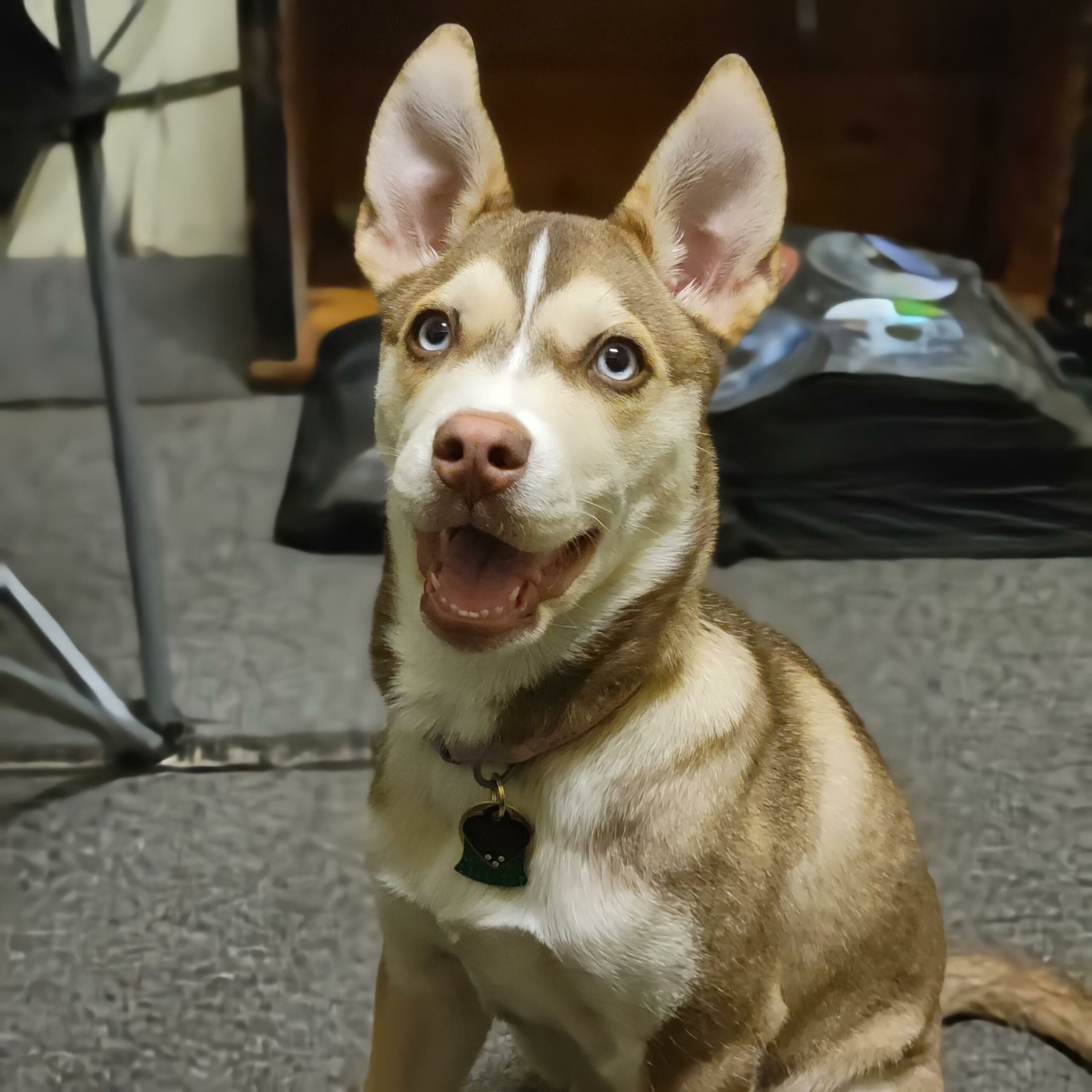
The Pitsky, a cross between the American Pit Bull Terrier and the Siberian Husky, showcases a variety of sizes and shapes. The genetics of its purebred parents influence these traits.
When looking at Pitsky’s body, it’s essential to look at weight, height, and unique physical features. These aspects are crucial to understanding how the breed behaves and its role as a pet.
- Height and Weight:
- Height: ranges from 16 to 25 inches at the shoulder
- Weight: can weigh between 30 and 80 pounds
- Body Features:
- Muscle Build: Strong and athletic
- Body Proportion: Limbs and body are well-balanced
- Fur and Color:
- Fur Length: Can be short or medium, with variable thickness
- Color Variations: Includes a broad range, from single colors to mixed patterns
The Pitsky is known for its muscular build, reflecting its strength and agility. The balance in its physical form, with a proportional torso-to-limb length, contributes to its athletic appearance. The breed’s coat can be short or medium in length and comes in various colors and patterns, which adds to its visual appeal.
Understanding these physical details can help owners provide better care and find a role that suits the breed’s abilities and needs.
Average Height Range
The Pitsky, a blend of American Pit Bull Terrier and Siberian Husky, displays various sizes. With an average height of 16 to 25 inches at the shoulder, these dogs inherit a mix of physical traits from their parent breeds.
The variable size of Pitskies comes from their unique genetic makeup, drawing from both the medium stature of the American Pit Bull Terrier and the larger build of the Siberian or Alaskan Husky.
When observing a Pitsky puppy grow, it’s clear that their growth patterns may lean towards either the medium or large size category. This crossbreed’s genetic diversity creates a broad range of appearances, making it challenging to predict the exact size they will reach as adults.
Potential Pitsky owners need to understand that each dog’s size will be influenced by its specific lineage.
Weight Specifications
The Pitsky, a crossbreed of the American Pit Bull Terrier and the Siberian Husky, has a weight range that varies considerably, typically between 30 to 80 pounds.
The mix of these dogs results in various body types, from the slimmer Pit Bull Terrier to the sturdier Husky. This variety in their genetic makeup means their dietary requirements must be carefully considered to ensure they remain healthy and maintain the proper muscle tone.
Pitskies’ caloric intake should match their activity levels to avoid excess weight gain, especially since some may be more prone to a larger physique like their Husky ancestors. A proper diet supports their need for regular, high-energy exercise. This helps keep them happy and can prevent health issues.
Every Pitsky needs to have a diet and exercise plan that’s customized to their unique needs.
Body Structure Traits
Reflecting on the importance of a balanced diet and exercise for Pitskies, we must also look at their body structure to fully understand their needs. Piskies are a mixed breed that can be medium or large, with heights ranging from 16 to 25 inches at the shoulder. Their size variation highlights the hybrid genetics of their parents, the American Pit Bull Terrier and the Siberian Husky.
These dogs have a double coat that is short to medium in length, providing both protection and insulation. Their coats display a wide range of colors and patterns. The color of their eyes can be brown, blue, or even heterochromia.
Pitskies may face specific health issues like hip dysplasia and allergies. Therefore, monitoring their structural health is vital for both owners and breeders.
Coat and Color Varieties
Pitskies come in many colors, including white, black, brown, grey, and even the striped pattern known as brindle. Their coats are either short or of medium length. These dogs result from breeding a strong Pit Bull Terrier with a tough Siberian Husky, which gives them a rich mix of physical traits. This mix results in Pitskies having a unique look with various coat colors and textures.
The combination of their parents’ genes means Pitskies can look very different from one another. Some will need more grooming than others, but most will need regular brushing to keep their fur healthy and to reduce shedding. The Husky’s genes can also give Pitskies distinctive markings and patterns that make them stand out.
Tail and Ear Styles
Pitskies, a mix between American Pit Bull Terriers and Siberian Huskies, show a wide range of tail and ear styles due to their mixed heritage. You might see a Pitsky with a bushy, curved tail similar to a Husky or a shorter one like a Pit Bull, which the American Kennel Club recognizes.
Their ears can be just as diverse; some have the pointed, stand-up ears of a Husky, while others inherit the soft, hanging ears of a Pit Bull. This mix of traits showcases the uniqueness of mixed breeds, where breeding for specific characteristics, such as the Husky’s striking blue eyes, might affect other physical features like the ears and tail.
These features aren’t just for looks—they’re a part of what makes a Pitsky’s body beautiful and functional.
Temperament Traits
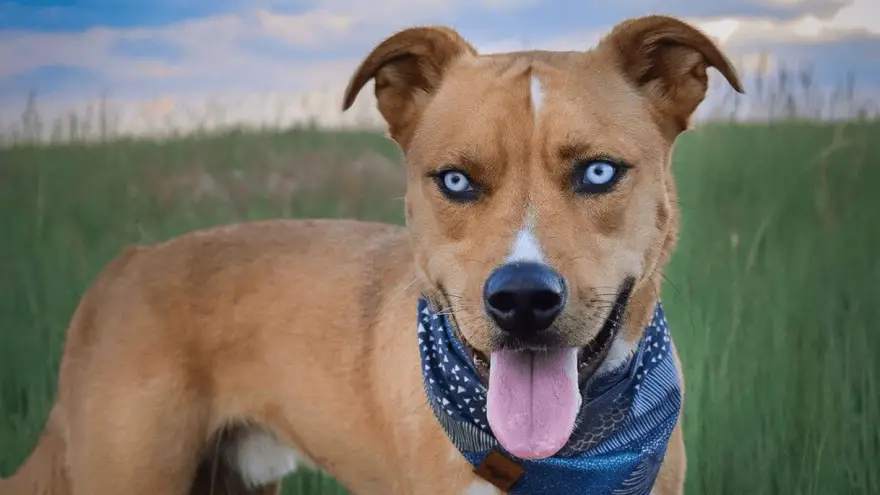
The Pitsky is an energetic crossbreed of the American Pit Bull Terrier and the Siberian Husky. This mix results in a dog with a rich array of traits from its ancestry. These dogs are known for their vigor and friendliness but need the right setting to thrive.
Looking into their behavior, we can see some essential qualities:
Energetic and Playful Nature
Pitskys have a lot of energy and love to play. They need plenty of exercise and enjoy being part of family activities.
Affectionate With Family
They form deep connections with their families. If not guided correctly, they might become too protective.
Intelligent and Trainable
Pitskys are intelligent and can learn many commands. However, they can be headstrong, so consistent training is critical.
In today’s world, Pitsky’s need for exercise means they’re perfect for active families. Their intelligence makes them capable partners in various dog sports and activities. It’s also vital for potential owners to understand the commitment needed in training these dogs to ensure they become well-adjusted family members.
Energetic and Playful Nature
Pitskies are known for their boundless energy and fun-loving nature, thanks to the vigorous traits they inherit from their Pit Bull Terrier and Siberian Husky parents. They need a lot of exercise and mental games to use up their energy. Owners should plan a few hours of daily activity to keep these dogs happy.
Pitskies also love to play, and they’re very friendly, which makes them great partners in all sorts of activities. Proper training from an early age is crucial for these dogs. It helps them channel their energy well and prevents naughty habits from forming. Keeping their minds busy is just as important so they fit into the family well and enjoy life to the fullest.
Affectionate With Family
Pitskies are well-known for their devotion and warm-hearted nature, often showing their love for family with enthusiastic tail wags and a desire to be close. These affectionate dogs quickly become integral to family life, forming strong attachments to each person.
They enjoy spending time with their humans and are sensitive to their emotions, which shows they can connect deeply. While some may prefer a bit more personal space, most Pitskies are consistent in their loving behavior toward everyone at home.
This quality helps create a loving and supportive atmosphere, making the Pitsky a cherished and faithful family pet.
Intelligent and Trainable
Pitskies, born from the combination of Pit Bull Terriers and Siberian Huskies, are innovative and responsive to training. They benefit from dog training that uses positive reinforcement. Such methods, which use rewards and encouragement instead of punishment, are proven to work well for teaching obedience.
Pitskies have a lot of energy and need regular, engaging training to use their energy positively and avoid destructive behaviors. Starting training early and using consistent, positive techniques helps Pitskies show off their smarts and flexibility. This approach generally makes them easier to train than many other breeds.
High Prey Drive
Many Pitskies, a mix between American Pit Bull Terriers and Siberian Huskies, have a strong prey drive. This drive makes them likely to chase and even hunt smaller animals. It’s not that they’re aggressive; it’s just how they were naturally bred to behave. Both of their parent breeds were used to being very active. If they don’t get enough exercise, they might start showing destructive behaviors.
Owners of these dogs should focus on socialization and training from an early age. This helps manage their prey drive. Keeping their minds busy with different activities is as important as physical exercise. It’s also essential to ensure they’re safe around smaller pets and when off their leash. This helps stop any unwanted chasing.
Socialization Requirements
Understanding the strong hunting instincts of Pitskies is crucial for their social development. These dogs need thorough socialization to help prevent behavioral issues and to get along well with people and other pets. Pitskies are a mix of American Pit Bull Terrier and Siberian Husky, so their socialization needs are complex. They should be exposed to different places and situations from a young age.
Pitskies need to meet various people and animals regularly. Places like dog parks are perfect for them to interact and become friendly pets. They also require a lot of activity to use up their energy in a positive way. Playing with other dogs is a good outlet for them.
Training with positive reinforcement is critical to Pitsky’s social skills. It helps them listen and adjust to different environments. Always use a friendly tone and give them rewards to encourage good behavior. Avoid using any harsh methods, as these can be counterproductive.
Pitsky Health Considerations
The Pitsky, a hybrid of the American Pitbull Terrier and the Siberian Husky, faces various health issues that owners and vets must watch closely. Preventative care is critical, involving regular health checks, shots, and keeping parasites at bay to help avoid inherited health problems. A diet designed for this breed’s needs is critical for their high-energy lifestyle and to prevent nutritional health issues.
Common Health Issues:
The Pitsky may inherit conditions like hip dysplasia and cataracts. They can also suffer from breed-specific issues such as hyperthyroidism and allergies. Owners should be vigilant for early signs of joint and skin conditions.
Preventive Veterinary Care:
Routine vet visits are vital for spotting health problems early. Keeping up with vaccination schedules and preventing heartworm and fleas are also important. Managing weight and exercise can help prevent obesity.
Special Dietary Needs:
A balanced diet is essential for joint health and maintaining energy. The right food can also improve skin and coat health. Owners should be aware of the need for dietary changes as their Pitsky ages and to address any food sensitivities.
Common Health Issues
Pitskies, created from American Pit Bull Terriers and Siberian Huskies, face multiple health challenges. Prospective owners need to be aware of issues like hyperthyroidism, hip dysplasia, cataracts, and allergies. These problems often come from the genes they inherit from their parent breeds.
Hyperthyroidism is a gland issue that usually responds well to medication. Hip dysplasia involves improper hip joint formation and might require surgery as it can lead to arthritis.
Visual problems in Pitskies often stem from cataracts, and treatment depends on how severe the condition is. Allergies might need changes in diet or adjustments to the dog’s environment.
It’s vital to take your Pitsky for regular vet visits for early problem detection and to keep them healthy. Your vet can create a specific care plan to help manage these issues and ensure your Pitsky lives happily.
Preventive Veterinary Care
Regular vet visits are vital for keeping Pitskies healthy and catching early signs of hip dysplasia, hyperthyroidism, cataracts, and allergies. These check-ups are a proactive way to address common health problems in this mixed breed.
Choosing the right dog food is crucial for them to get the energy they need and to prevent weight-related health problems. A balanced diet is critical for their muscle and bone health. Vets use tests to spot problems early on.
A Pitsky’s health routine isn’t just about food and exercise; grooming and teeth cleaning are also essential. These practices help the dog stay healthy and live a longer life.
Special Dietary Needs
Ensuring Pitskies get the proper nutrition is vital for their well-being. These dogs can inherit health issues like hip dysplasia and thyroid problems, which a proper diet can help manage. It’s best to feed them high-quality dog food made for large, active dogs. This food helps them maintain a healthy weight and supports their joints, reducing hip dysplasia risks.
Pitskies are energetic and need a diet that keeps up with their active lifestyle. They need food that’s high in energy and full of nutrients.
It’s also essential to have regular vet visits. The vet can ensure the diet fits the dog’s health, including any allergies or sensitivities, to keep the Pitsky healthy.
Essential Pitsky Maintenance Tips
You’ll need a well-rounded care plan to keep your Pitsky healthy and joyful. This means taking steps in exercise, diet, and grooming tailored to this breed.
Exercise Routine Essentials
A Pitsky thrives on an active lifestyle, so setting up a consistent exercise plan that matches their energetic nature is essential. Include activities that challenge them mentally, like interactive games, to keep their minds sharp.
Nutritional Guidelines
Watch their diet closely by providing the right amount of calories, which depends on their size and activity. A good mix of proteins, fats, and carbs is critical, and you should adjust your food intake as your health needs change.
Grooming Practices
Regular coat care prevents tangles and mats in your Pitsky’s fur. Check their skin regularly for irritation, and keep up with nail clipping and teeth cleaning to avoid potential health issues.
Exercise Routine Essentials
For Pitsky to stay healthy and well-behaved, their daily routine must include running and playing. These should be paired with brain games that come from regular training sessions.
Pitskies need plenty of exercise to prevent them from getting bored and acting out. Taking them for daily walks and having active play sessions are critical to their happiness. A good workout plan keeps your dog in shape and wards off health problems related to weight and heart health.
Since they’re a medium to large breed with lots of energy, they thrive on challenging activities. Mixing some brain exercises with their physical ones is crucial to keep their bodies and minds in top form.
Nutritional Guidelines
A balanced diet full of nutrients is vital to keeping a Pitsky healthy. It’s best to feed them high-quality dry food for more extensive, active dogs. This helps them keep up with their high-energy needs.
Dog foods created based on scientific research, like those recommended by Rachael Ray, are packed with the suitable protein, fat, and carbs that active dogs like Pitskys need. Sticking to such a diet will help these sociable dogs stay in top shape and full of life.
Each Pitsky is unique, so it’s essential to consider their needs, like age, weight, and how much exercise they do when planning their meals. Tailoring their diet can help avoid problems like obesity or missing out on vital nutrients. This level of care ensures the dog stays healthy and happy.
Grooming Practices
A nutritious diet is the foundation of a Pitsky’s health, but a consistent grooming routine for their mid-sized to oversized coat is just as vital. This helps maintain their health and cleanliness.
These mixed-breed dogs often have fur that can quickly become matted without regular care. Dirt and debris can get caught in a Pitsky’s thick fur, so brushing them frequently is essential. This helps spread their skin’s oils, removes shed hair, and helps avoid skin problems.
Pitskies might be challenging to train due to their high energy and smarts, but they will learn to cooperate if you start grooming them early. Regular grooming encourages good behavior and strengthens the bond with your dog, making them excellent pets.
Health Check Priorities
Regular vet visits are vital to keeping your Pitsky healthy, as they help catch and treat any health issues early on. It’s critical to monitor conditions that Pitskies may inherit, like thyroid problems, allergies, and hip dysplasia.
Feeding your dog a balanced diet and giving it enough exercise is essential to prevent obesity and other health problems.
Keeping your Pitsky well-groomed and clean is also essential to avoid skin problems and to keep their ears and teeth healthy.
A well-trained Pitsky that responds to commands and is comfortable in a crate is usually a happier and healthier dog.
Training and Socialization
Training and socialization are crucial for a Pitsky puppy, starting at eight weeks old. This early start helps shape their behavior for various situations. Positive reinforcement is the best way for these dogs to learn. The Pitsky is a mix between the Siberian Husky and the American Pit Bull Terrier, making them intelligent and needing mental stimulation. Providing chew toys and teaching them commands can prevent destructive behavior. Crate training is also beneficial. Introducing them to new people and animals in a controlled way helps prevent aggression and other issues. Regular training and socializing are critical to a happy and well-behaved Pitsky.
Nutritional Guidelines for Pitskies
A Pitsky needs a diet carefully designed for high energy and to prevent health issues. They must adjust their food based on age, size, and how active they are to keep them in great shape and avoid weight problems. Watch how your dog reacts to different foods and change their diet if needed.
Essentials of a Balanced Diet
- Look for dog foods with high-quality proteins
- Include the right amounts of fats and carbs for energy
- Give them vitamins and minerals to boost their immune system
Tips for Controlling Portions
- Set up a feeding routine that fits their energy use
- Use measuring cups for precise portions
- Keep an eye on their weight to know if you need to feed them more or less
Special Food Needs
- Figure out any food allergies and how to handle them
- Add supplements if they’re at risk for specific health problems
- Work with a vet for a diet plan that’s just right for your Pitsky
Feed your Pitsky well; they’ll have the energy to play and stay healthy. Monitor their reaction to foods and consult a vet for the best advice.
Balanced Diet Essentials
Selecting the right dog food is crucial for the well-being of Pitskies, a breed known for its size and energy. They thrive on high-quality kibble designed for large, active dogs and have real meat at the top of the ingredient list to meet their protein needs. Steer clear of dog foods that use low-quality fillers and artificial ingredients, as these can harm your Pitsky’s health.
A nutritious diet supporting their muscular build and high energy is essential. The ideal food formula should address hereditary health concerns to keep your Pitsky in shape. Regular check-ups with a vet can help customize your dog’s diet, ensuring they get what they need for a healthy life and avoiding any nutritional gaps.
Portion Control Tips
Proper portion control is crucial for the well-being of Pitskies. It helps prevent weight issues and ensures they get the proper nutrients. Dog owners should use measuring cups to serve the exact amount of food their Pitsky needs.
The dog food label instructions can help you determine the right amount for your dog’s age, weight, and how active they are.
To avoid giving your dog too much food, watch how many treats you offer them as part of their daily calories. Talk to a vet if you’re unsure how much to feed your Pitsky. They can help you adjust meal sizes to ensure your dog stays healthy for years.
Special Dietary Considerations
When feeding Pitskies, choosing a high-quality kibble that matches their energetic nature and size is crucial. The food should have real meat as the top ingredient. Pitskies are among the most active dog breeds, so their diet should meet high energy requirements. Opt for food made for large, active dogs, and adjust the food amount based on the dog’s weight and activity levels.
Regular vet check-ups are vital to a Pitsky’s health, especially those with Siberian Husky ancestors who may have specific dietary needs. A vet can help create a tailored feeding plan to ensure your Pitsky gets all the nutrients it needs for a healthy, active life.

